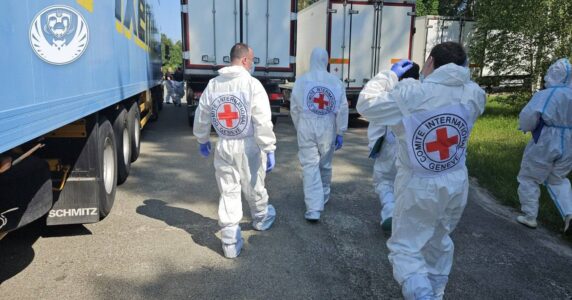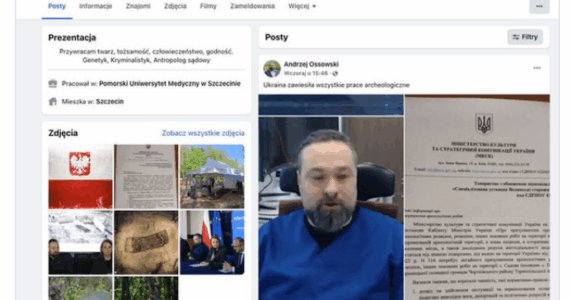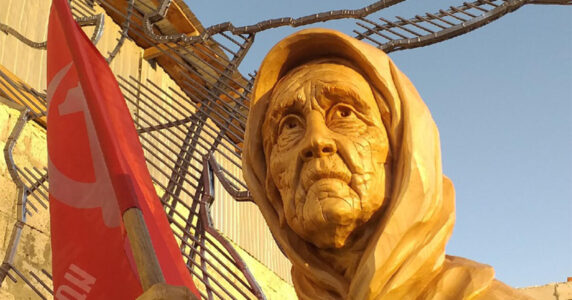Navigation and useful materials
The General Staff of the Armed Forces reported that the Russians had launched five guided air missile units and 28 cruise missile units of various types and bases (airborne X-101/X-555, X-22, X-59, naval Kalibr missiles). 18 cruise missiles and three guided missiles were neutralized by Ukrainian air defence. The rest hit energy infrastructure facilities in several regions of Ukraine.
The biggest war crime was the missile strike on a nine-floor building in Dnipro, which resulted in complete destruction of 72 flats and damage to 164. As of the morning of the next day, the number of people found dead as a result of the attack exceeded 20. At least 73 people were injured. The search and clearing of the rubble, under which dozens more living and dead residents of the building may remain, continued throughout the night.
The next day after the tragedy, the command of the Air Force of the Armed Forces of Ukraine provided an official explanation that the residential building in Dnipro was targeted by a Russian X-22 cruise missile, which the air defence was unable to shoot down, because Ukraine does not yet have firepower capable of neutralizing this type of missile.
Russian propaganda media covered another wave of missile terror on January 14 actively, but selectively.
The general tone of publications in Telegram was set by the Readovka channel, which called the shelling a “retaliatory strike.”
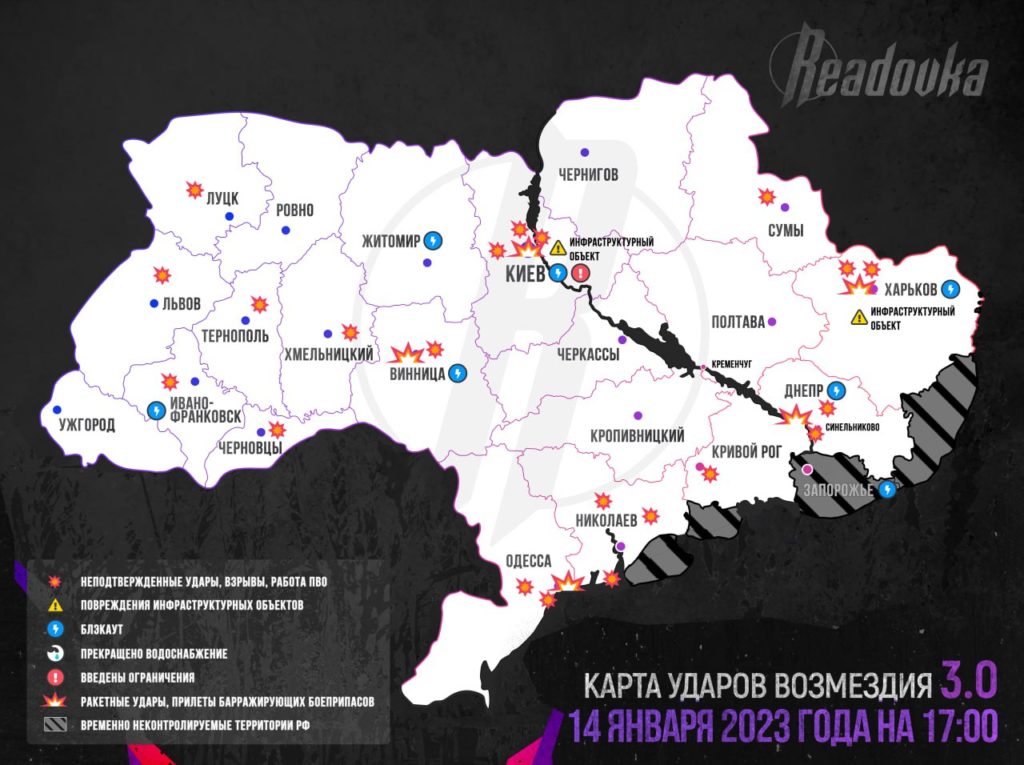
We should remind you that the FAU-2 ballistic missiles, which the Nazis used to attack London in 1944-1945, were called “weapons of revenge” by Nazi propaganda.
From the very morning, Russian propagandists openly relished reports of air raids, damage to infrastructure, and blackouts in Ukrainian cities. More than three dozen other propaganda resources reposted the message of the Readovka channel with a list of the consequences of the strikes. In total, more than 1,000 publications of a similar tone, dedicated to the attack on January 14, were found on Telegram.

Similar messages, albeit without a particularly emotional color, appeared on key Russian news websites.
Telegram channels also claimed that the strikes on January 14 were directed not only against the energy infrastructure, but also against Ukrainian air defence and reported on the success of the “hunt” for NATO systems (without evidence, as usual).
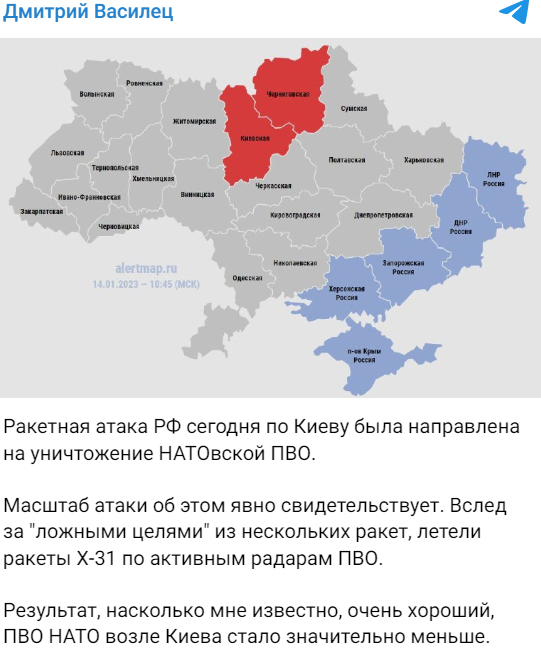
The destruction of a residential building and the death of civilians in Dnipro were ignored by the majority of popular Russian online media. The websites of the most important news agencies in Russia, including the state-owned TASS, RIA Novosti, resources of the VGTRK holding, had not reported on this event as of Saturday evening. The exceptions were Kommersant and Gazeta.ru publications, which wrote about the “partial destruction of a high-rise building” without mentioning the dead and injured. But they did repeat the official position of Russia’s MoD that the Russian army “does not strike civilian targets.”
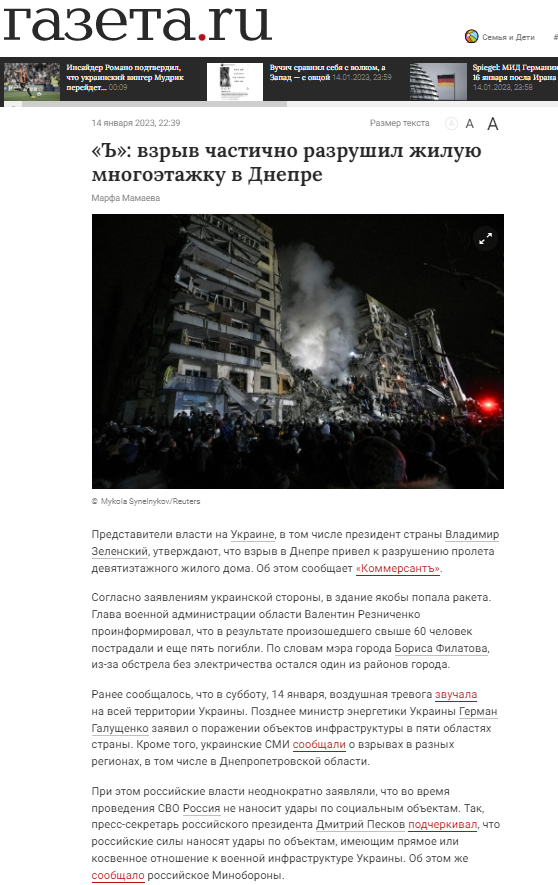
In contrast, Telegram channels, anonymous or not, actively spread conspiratorial versions aimed at “whitewashing” the obvious culprits and disorienting the readership.
A key role was assigned to the Readovka channel and the pseudo-Ukrainian channels Legitymny and Kartel.
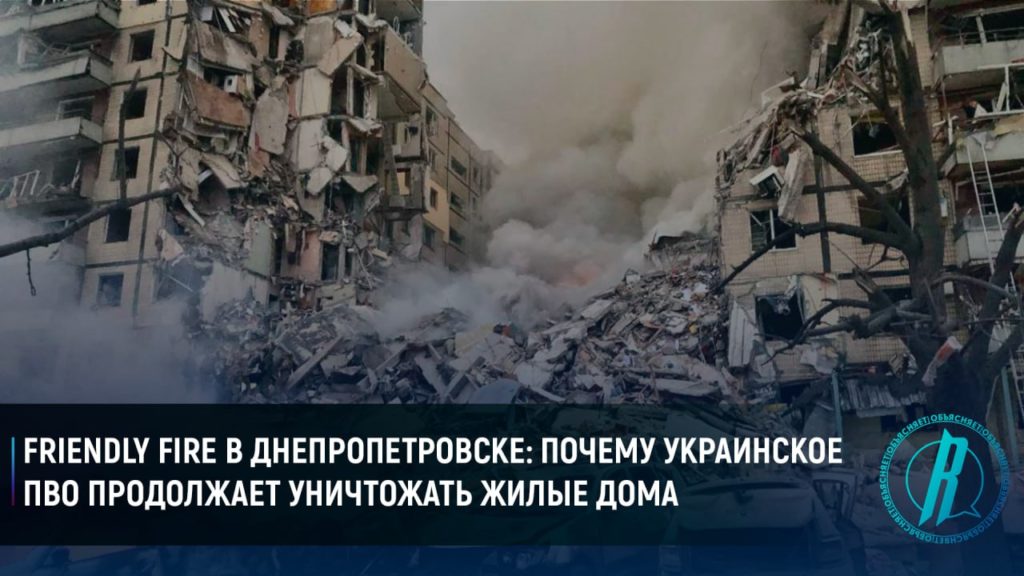

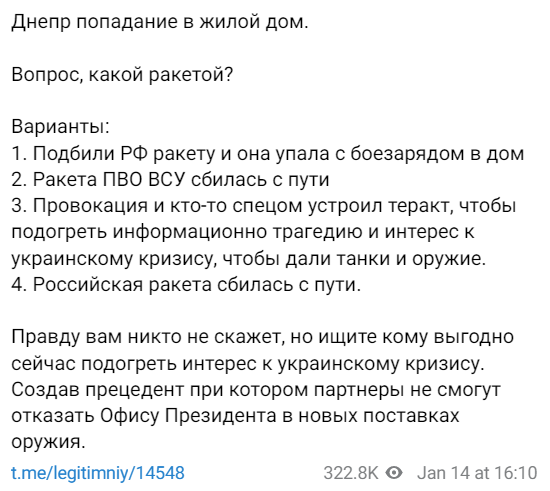
The first one unapologetically blamed the destruction of the building on the Ukrainian air defence systems, the second one came up with a total of four “alternative” versions, and the third one “explained” why the tragedy in Dnipro benefits the Ukrainian authorities. The last two channels accompanied their “analytics” with traditional conspiracy mantras that “no one will tell you the truth.”
Other versions invented by Telegram channels included:
- a Russian missile falling on a house after it was shot down by the air defence system (“Legitymny”, Dmitry Vasilets, “Novosti Kryma”);
- a Ukrainian missile that was supposed to intercept the Russian one hitting the house (“Legitymny”, Dmitry Vasilets, Yulia Vityazeva, “Operation Z: Soldiers of the Russian Spring”);
- terrorist attack planned by the Ukrainian special services (“Legitymny”, “Iznanka”, Ilya Kiva);
- gas explosion (“Kryminforum ZOV”, Readovka, Boris Rozhyn).
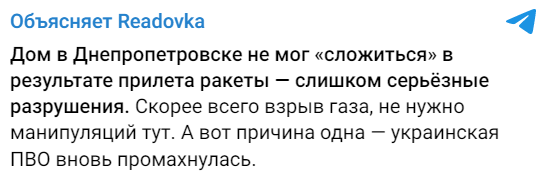
The idea that the Ukrainian air defence was to blame was promoted most aggressively.
Conspiratorial explanations alleged that the Office of the President of Ukraine and Zelenskyy personally already used the tragedy in Dnipro to:
- divert the attention of Ukrainian society from “giving up” on Soledar;
- attract additional attention of the West to Ukraine;
- demand more weapons and anti-aircraft systems from Western countries;
- mobilize society and the army for revenge against Russia;
- promote themselves.
In addition to Kartel, these messages were promoted by Tzargrad TV, Ukraina.ru, Iznanka, Lokhmaty Z Nikolayev, Agent Gosdepa, Khersonski tipchak, Pervyy Kharkovskyy, Oproverzheniye Feykov and other disinformation resources.
The simultaneous release of numerous versions, which often contradict each other, is a long-established tactic of Russian propaganda. This technique was used, in particular, after the Russian Buk missile shot down a Malaysian Airlines passenger plane in the sky over Donetsk region in the summer of 2014. This is done in order to disorient the audience as much as possible and convince them that the truth, no matter how obvious it is, is unreachable. “Insinuations” about the hidden motives of the government and other conspiracies aimed at increasing distrust in government institutions are meant to increase the effect.
Centre for Strategic Communication and Information Security
If you have found a spelling error, please, notify us by selecting that text and pressing Ctrl+Enter.
